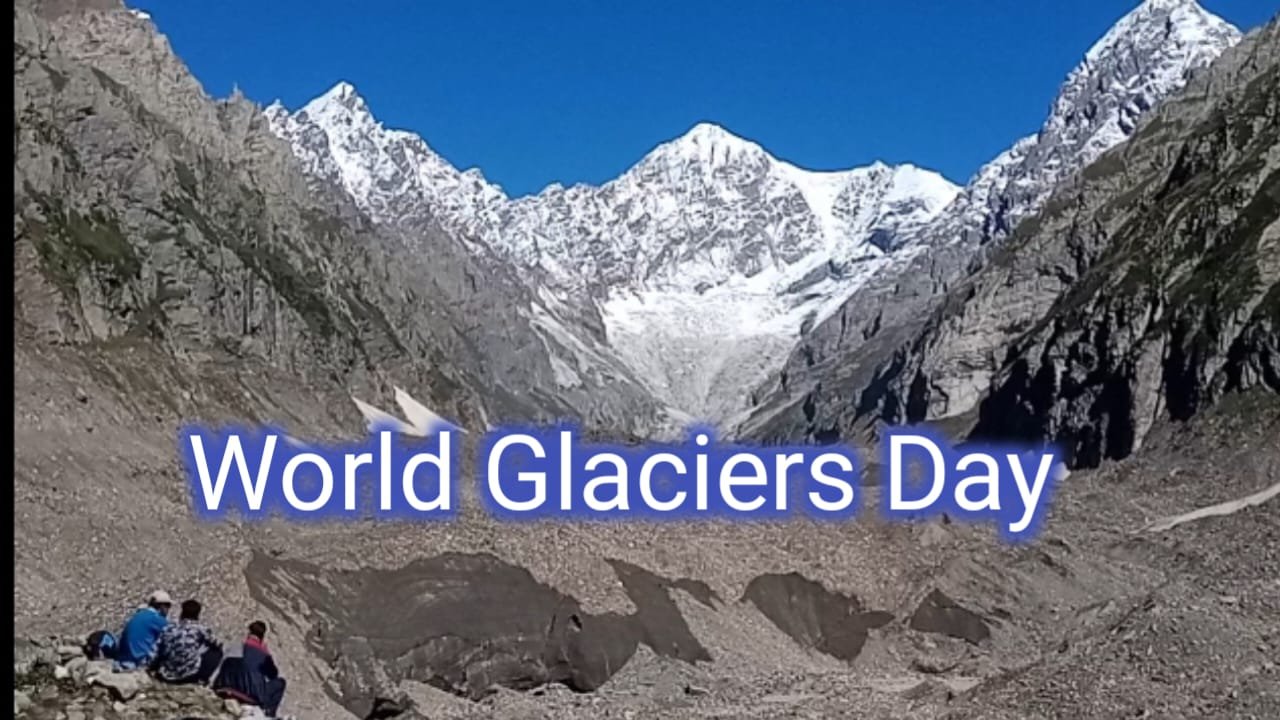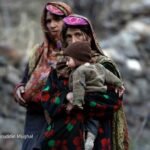International Day of Glaciers (March 21) & International Year of Glaciers 2025

By: Dr. Sardar Muhammad Rafique Khan
March 21 marks the International Day of Glaciers, a global observance dedicated to raising awareness about the critical role glaciers play in regulating the Earth’s climate and sustaining freshwater resources. Recognizing their immense importance, the United Nations has declared 2025 as the International Year of Glaciers, emphasizing the urgent need for scientific research, conservation, and policy action to protect these fragile ecosystems.
Global Significance
Glaciers, often referred to as the “water towers of the world,” provide freshwater to billions of people and support diverse ecosystems. However, rapid glacier retreat due to climate change poses severe threats to global water security, sea-level rise, and biodiversity. The International Year of Glaciers 2025 will serve as a platform for international collaboration, scientific advancements, and policy initiatives aimed at mitigating these risks and promoting sustainable glacier management.
National Significance: Pakistan’s Perspective
Pakistan is home to over 13,000 glaciers and more than 3,000 glacial lakes, primarily located in the Himalayas, Karakoram, and Hindukush mountain ranges. These glaciers are the primary source of water for the Indus River system, which sustains agriculture, hydropower, and drinking water supplies for millions. However, rising temperatures have accelerated glacial melt, leading to:
- Increased frequency of Glacial Lake Outburst Floods (GLOFs), causing damage to infrastructure and communities.
- Water variability, impacting agricultural productivity and food security.
- Disruptions to ecosystems and biodiversity dependent on glacial-fed water sources.
The International Year of Glaciers 2025 provides Pakistan with an opportunity to strengthen climate adaptation policies, invest in glacier monitoring technologies, and enhance disaster risk reduction strategies to safeguard its water resources and vulnerable communities.
Regional Importance: AJ&K Perspective
Azad Jammu & Kashmir (AJ&K), particularly its northern regions like Neelum Valley, is home to numerous small yet vital glaciers that contribute significantly to local hydrology and downstream water availability. Climate change has intensified glacial retreat in AJ&K, leading to increased risks of GLOFs, altered river flows, and disruptions in water security.
An analysis of data from the AJ&K State of the Environment Report 2018 highlights concerning trends in glacial retreat. Satellite imagery comparisons from 2000 to 2017 show that glacier area in AJ&K declined from 15,111 hectares in 2000 to 11,350 hectares in 2017—an alarming loss of 3,741 hectares over 17 years, with an average retreat rate of approximately 220 hectares per year. If this trend continues, AJ&K’s glaciers could disappear within the next 51 years (Khan, 2018).Similarly, research by Ashraf et al. (2012) identifies 224 glaciers in AJ&K, collectively storing about 4.9 cubic kilometers of ice and covering an area of 109 square kilometers. Additionally, there are 76 glacial lakes spanning a total surface area of 545 hectares, many of which pose significant risks of GLOFs. These statistics underscore the urgent need for monitoring and climate adaptation efforts in the region.
Challenges and Risks in AJ&K
The retreat of glaciers in AJ&K has led to:
- Increased risk of flash floods and GLOFs, endangering vulnerable valley communities.
- Altered river flows, impacting agriculture, hydropower generation, and drinking water supply.
- Changes in local weather patterns, leading to biodiversity loss and ecosystem degradation.
The International Year of Glaciers 2025 presents a vital opportunity to address these challenges by advancing scientific research, mobilizing policy support, and fostering community engagement for glacier conservation. Key priorities for AJ&K should include:
- Strengthening early warning systems to mitigate GLOF risks.
- Promoting nature-based solutions for water conservation and ecosystem restoration.
- Integrating local knowledge and community participation into climate adaptation strategies.
Call to Action: Protecting Our Glaciers for the Future
As we observe the International Day of Glaciers and prepare for the International Year of Glaciers 2025, the urgency to protect these vital ice reserves has never been greater. Glaciers are critical to freshwater supply, biodiversity conservation, and climate regulation, yet they are shrinking at an unprecedented rate due to global warming.
To safeguard our glaciers and the ecosystems they sustain, we must:
1. Enhance Glacier Monitoring & Research – Support scientific studies, remote sensing technologies, and local data collection to improve understanding of glacial dynamics and climate impacts.
2. Empower Communities – Engage local populations in conservation efforts, water resource management, and disaster preparedness to reduce risks associated with glacier melt.
3. Strengthen Policies & Advocacy – Advocate for robust climate policies that prioritize glacier protection, sustainable water management, and long-term resilience.
4. Foster Global Cooperation – Collaborate with international partners to exchange knowledge, technology, and resources for effective glacier conservation.
Glaciers are vanishing at an alarming rate—immediate action is necessary. Governments, researchers, communities, and individuals must unite to safeguard these vital ice reserves. Together, we can preserve our glaciers for future generations.
Glaciers are the lifelines of our ecosystems, crucial for sustaining water resources, biodiversity, and livelihoods. As AJ&K faces mounting climate threats, proactive measures must be taken to protect its glacier-fed hydrological systems. The International Day and Year of Glaciers serve as a wake-up call to act collectively and implement solutions that ensure the sustainability of our environment, economy, and communities. Let us seize this opportunity to advocate for glacier conservation and secure a resilient future for generations to come.
About Author

Latest News!
 Blog05/21/2025Asia Cup 2025: Schedule, Teams, Format, and Live Streaming
Blog05/21/2025Asia Cup 2025: Schedule, Teams, Format, and Live Streaming Tourism04/02/2025The Arrival of Spring, Tourists’ Influx, and Our Responsibilities
Tourism04/02/2025The Arrival of Spring, Tourists’ Influx, and Our Responsibilities Climent Change03/21/2025International Day of Glaciers (March 21) & International Year of Glaciers 2025
Climent Change03/21/2025International Day of Glaciers (March 21) & International Year of Glaciers 2025 Opinion03/14/2025Congratulating the Inclusion of the Gojri Language in the Curriculum and Expressing Hope for the Pahari Language
Opinion03/14/2025Congratulating the Inclusion of the Gojri Language in the Curriculum and Expressing Hope for the Pahari Language






